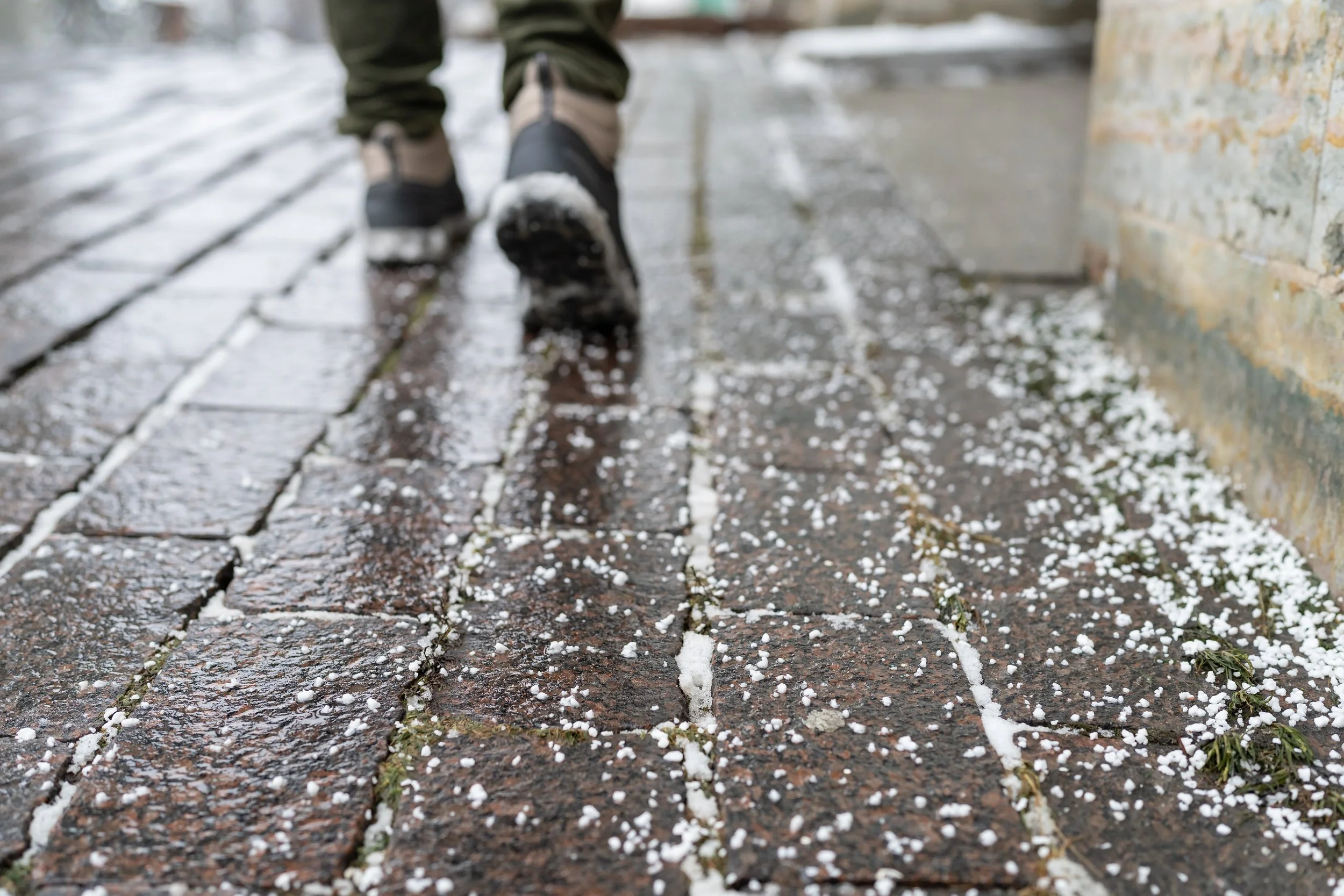De-Icing Your Walkways
Winter weather in some areas is associated with icy walkways. Leaving ice on walkways can lead to a dangerously slippery surface, so you'll need to get rid of that ice somehow. Here are some things to keep in mind when de-icing your walkways.
Ice can build up
Depending on the weather, there may be a thin layer of ice that forms on walkways during the winter. Ice cannot be easily shoveled away like snow can, so it definitely poses a problem. De-icing products are readily available and make ice melt at lower temperatures, but they should be used with caution since they could potentially cause damage to mortar joints, masonry surfaces, and surrounding vegetation. You'll also have to be very careful using them around pets and children. Sand is a natural product that can be used in combination with many types of de-icers. It can offer traction and doesn't pose the same risks as many de-icing products can.
You might be wondering exactly when is the best time to use these products. Many suggest that you start applying the de-icing product before a storm hits to prevent the ice from building up. Then, be sure to shovel away any snow, ice, and slushy material that's developed on your walkways. If you don't do this important task, the water may re-freeze and you may still have to deal with a hard-to-clean mess. During bigger storms, you may have to apply the product more than once and repeat the shoveling process.
Be proactive
There's another way to combat ice on your walkways in the winter. If you get a heated melting mat, you won't have to think about which types of products to get and when to apply them. You can simply have the heating elements do the hard work. If you turn on your mat before it starts snowing, it will melt as it hits the sidewalk. That being said, you may still have to shovel some snow if it falls in heavy bands. Companies like Inside Outside Spaces and LC Hardscapes can help you design walkways with heating mats built into them. Snow melting mats can be installed under a variety of materials, including asphalt, pavers, and concrete. Best of all, many modern heating mats have sensors built into them. They can sense when the conditions favor the formation of ice and can turn on automatically in these situations. Otherwise, you can have a switch installed inside your home, or you may be able to have your heated walkway controlled by remote control or through your mobile device.
If you'd like to redesign your walkway, check out some of the ideas at TheHomeMag. When you're having heating mats installed, it might be a good time to come up with new ideas for your patio or enhance your curb appeal with an interesting hardscape design. Follow TheHomeMag on Facebook and Instagram so that you can check out more ideas.

